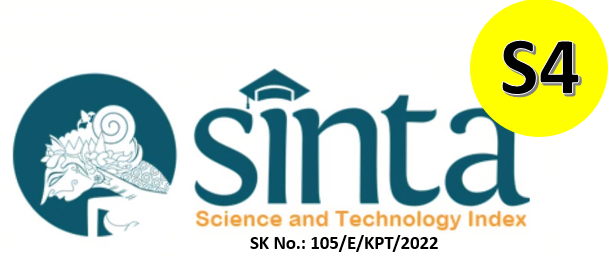Determinants of the Amount of Waste in East Java
DOI:
https://doi.org/10.29080/alard.v7i2.1405Keywords:
Environment, Linear Regression, Robust Regression, WasteAbstract
Listed as one of the largest waste contributor provinces in Indonesia. The population of East Java in 2020 reached 39 million people, it is the second highest in Indonesia. The increasing number of people accompanied by an increase in income will increase people's consumption in an area and this will cause the increasing amount of waste. If this waste problem is not handled properly, it will have a domino effect as well as degrading the environment. This study wanted to determine the effect of population, real expenditure per capita per year and the number of waste banks on the amount of waste in 2020 in East Java Province. This study uses a comparison of OLS Regression and Robust Regression models. The criteria for selecting the best model use the smallest MAPE, RMSE, and RSE values and the largest R-square value. The results of the partial test and the simultaneous test show that the variables of population, real expenditure per capita per year and the number of waste banks significantly affect the variable amount of waste in East Java with the selected model is the Robust Regression model. The R-square value of the Robust Regression model in this study is 0.8909, meaning that the model's ability to explain the variability of the East Java waste amount data is 89.09 percent, and the rest is explained by other variables not included in the model.
Downloads
References
Anderha, R., & Maskar, S. (2021). Pengaruh Kemampuan Numerasi dalam Menyelesaikan Masalah Matematika terhadap Prestasi Belajar Mahasiswa Pendidikan Matematika. Jurnal Ilmiah Matematika Realistik, Vol. 2 (1), 1-10.
Edriani, T., Rahmadania, A., & Noora, D. (2021). Analisis Hubungan Kepadatan Penduduk dengan Pola Penyebaran COVID-19 Provinsi DKI Jakarta menggunakan Regresi Robust. Indonesian Journal Of Applied Mathematics, Vol. 1 (2), 51-60.
Mandasari, D., Wirjodirdjo, B., & Anityasari, M. (2020). Peningkatan Fasilitas Bank Sampah sebagai. Jurnal Teknik ITS, Vol. 9(2), F322-F327.
Nursiyono, J., & Pray, H. N. (2016). Setetes Ilmu Regresi Linier. Malang: Media Nusa Creative.
Prajati, G., Padmi, T., & Rahardyan, B. (2015). Pengaruh Faktor-faktor Ekonomi dan Kependudukan terhadap Timbulan Sampah di Ibu Kota Provinsi Jawa dan Sumatera. Jurnal Teknik Lingkungan, Vol. 21 (1), 39-47.
Rizaty, M. A. (2021, Juli 29). datapublish. Retrieved from databoks.katadata.co.id: https://databoks.katadata.co.id/datapublish/2021/07/29/mayoritas-sampah-nasional-dari-aktivitas-rumah-tangga-pada-2020
Sari, R., & Bustami. (2021). Penerapan Regresi Komponen Utama Robust S-estimator untuk Analisis Pengangguran di Kota Dumai. Karya Ilmiah Universitas Riau, 1-12.
Suryani, A. S. (2014). Peran Bank Sampah dalam Eektivitas Pengelolaan Sampah (Studi Kasus Bank Sampah Malang). Aspirasi: Jurnal Masalah-masalah Sosial, 71-84.
Utomo, A., Sumartini, N. P., Siregar, A., Nagari, N., & Triyaningsih, S. (2014). Regresi Robust untuk Memodelkan Pendapatan Usaha Industri Makanan dan Non-Makloon Berskala Mikro dan Kecil di Jawa Barat. Jurnal Matematika, Sains, dan teknologi, Vol. 15 (2), 63-74.
Wardhani, M., & Harto, A. D. (2018). Komparasi Pengurangan Timbulan Sampah Berbasis Masyarakat menggunakan Prinsip Bank Sampah di Surabaya, Gresik, dan Sidoarjo. Journal Ilmiah Universitas Trunojoyo, Vol. 11 (1), 52-63.
Zach. (2020, Desember 13). How to Calculate DFFITS in R. Retrieved from statology.org: https://www.statology.org/dffits-in-r/
Published
How to Cite
Issue
Section
License
Copyright (c) 2022 Joko Ade Nursiyono, Chusnul Chotimah, Warisna Endah Fitrianti

This work is licensed under a Creative Commons Attribution-ShareAlike 4.0 International License.
Authors who publish with this journal agree to the following terms:
- Authors retain copyright and grant the journal right of first publication with the work simultaneously licensed under a Creative Commons Attribution License that allows others to share the work with an acknowledgement of the work's authorship and initial publication in this journal.
- Authors are able to enter into separate, additional contractual arrangements for the non-exclusive distribution of the journal's published version of the work (e.g., post it to an institutional repository or publish it in a book), with an acknowledgement of its initial publication in this journal.
- Authors are permitted and encouraged to post their work online (e.g., in institutional repositories or on their website) prior to and during the submission process, as it can lead to productive exchanges, as well as earlier and greater citation of published work.



